Basic Information about Japanese Trains
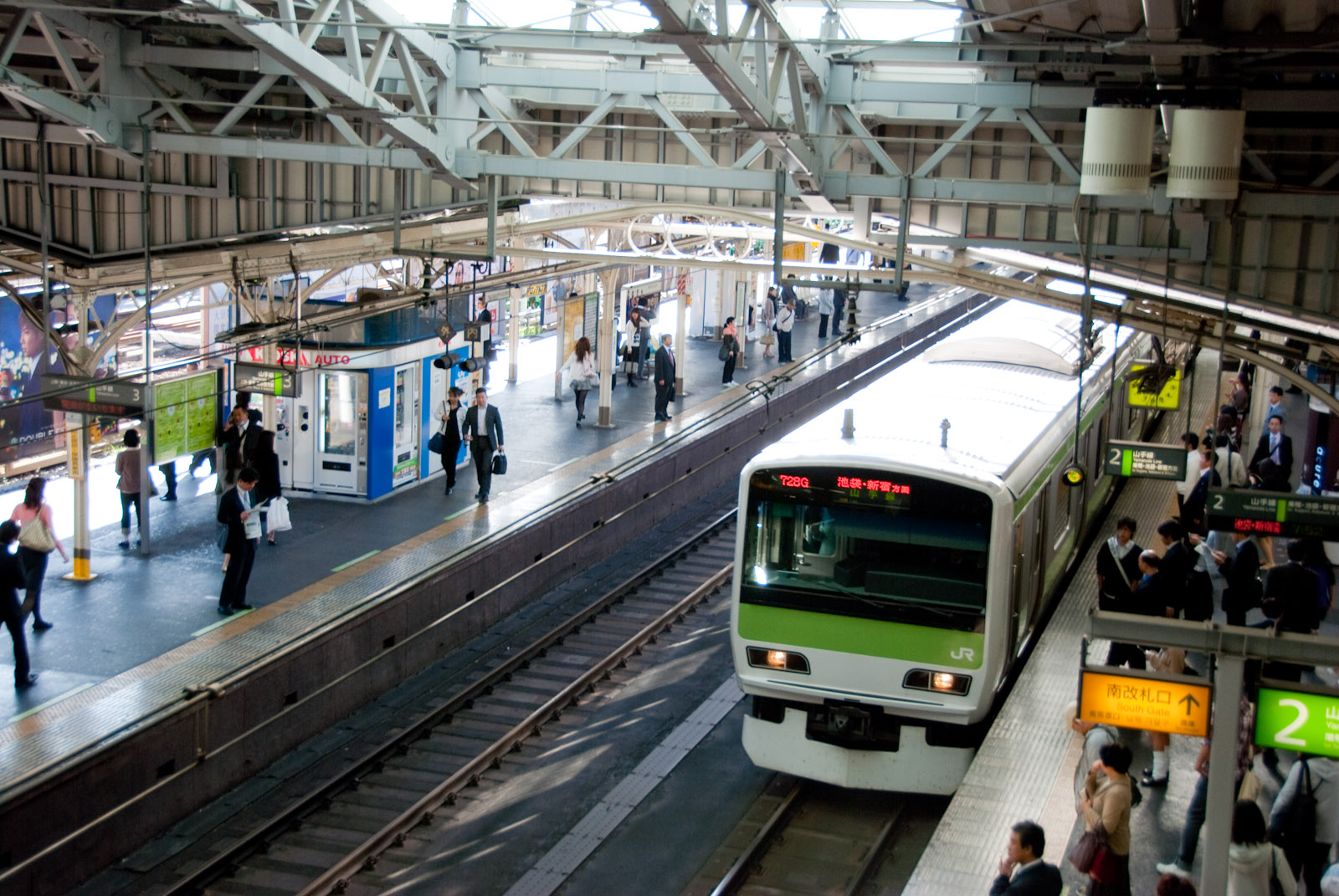
In contrast to JR, other private railway companies are called "Shitetsu (私鉄)". the networks are smaller than that of JR, but you need to use shitetsu in order to visit some places in Japan. Also, the fare is chaper than JR's fare in some cases.
Categories of Trains
Trains are catgorized by the number of stops. However, each railway companies set the categories individually, so it cannot be said definitely. In this section, we explain the typical categories.Name |
Category |
|---|---|
普通, 各駅停車 |
Local Train Trains in ths category stop at every stations. |
快速 |
Rapid Train Trains in this category skip some stations. |
急行 |
Express Trains in this sections stop at important stations. In the case of JR, an express fare ticket is needed in addition to a basic fare ticket. |
特急 |
Limited Express Trains in this category stop at very important stations. In many cases, an express fare ticket is needed in addition to a basic fare ticket. |
|
Bullet Train Shinkansen are operated by JR, and an express fare ticket for Shinkansen is needed in addition to a basic fare ticket. Detailed information is written in this page. |
How to Buy Tickets
Buying Basic Fare Tickets
If you have IC cards, you can pass the ticket gate by useing it instead of buying tickets. IC cards are sold at ticket counters and ticket-vending machines. In order to issue an IC card, you need pay 2,000 yen; 500 yen is as a deposit and 1,500 yen is charged on the IC card.
Basic fare tickets are sold by ticket‐vending machines. There are signs that are wirriten "乗車券", "きっぷ", or "切符" around the machines. (these words mean "train tickets".) In order to buy tickets, please operate it in the following steps;
(1) Find your destination in the map
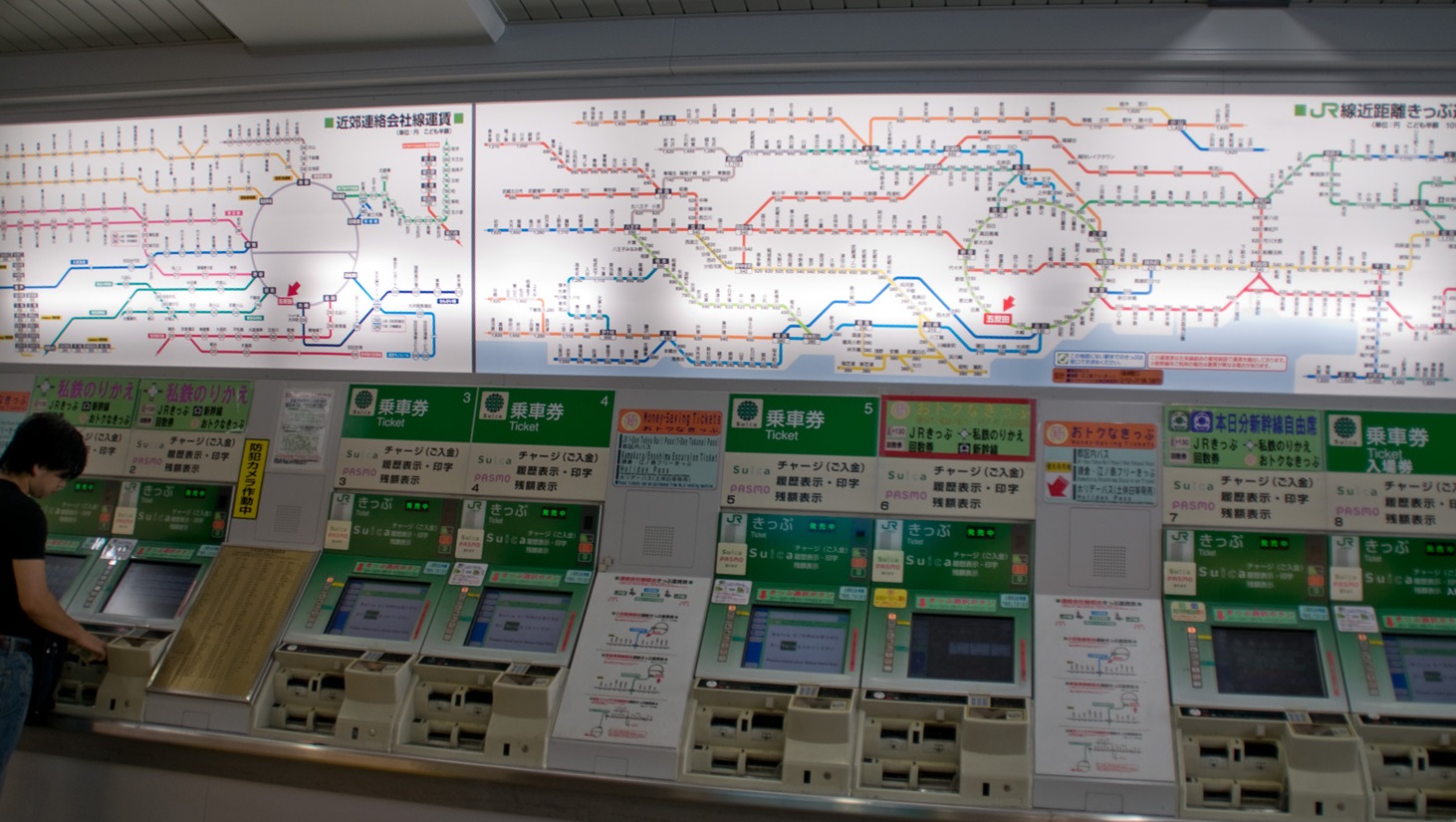
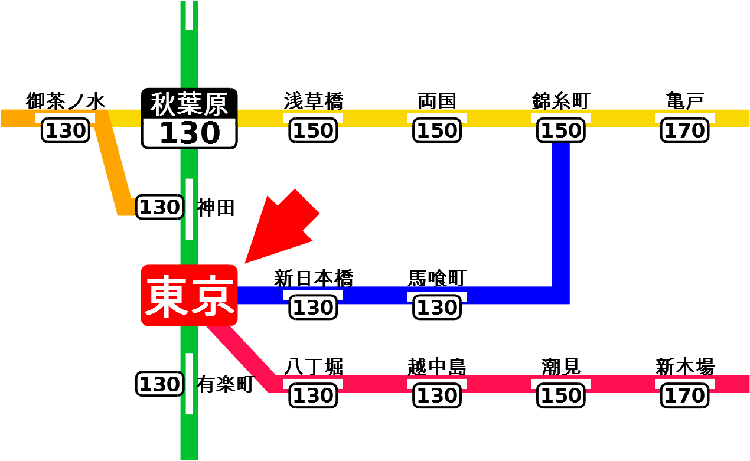
If you are at Tokyo station (東京), and you want to go Akihabara station (秋葉原), the ticket price is 130 yen.
(2) Insert the money into the ticket-vending machine
After finding your destination, please insert the money into the ticket-vending machine. These machines cannot accept coins of 1 and 5 yen.
(3) Check the number of tickets and the types of the tickets
There are buttons with the symbols of human at left side of the machine. The numbuer of human on these buttons indicates the number of tickets that the machines issues. Also, the symbol of a large human means a ticket for an adult, and that of a small human means a ticket for child. (the price of the ticket for a child is harf of that for an adult.) The default is one adult, so if you want one ticket, you don't need to touch or push these buttons.
(4) Touch or push the button which shows the number equaling to the ticket price.
Touch or push the button with the price, and the machine issues the ticket of the price. Please be careful not to forget to take the charge.
In many cases, the names of station in the map are written only in kanji (Japanese), so we think it is hard for many foreign tourists to read it. However, all station set fare adjystment machines (精算機, Seisanki), so even if you cannot understand the names of station and the correct price of tickets, you can buy the lowest price of ticket at first, and after arriving at your destination station, you can adjust the fare by the machines.
The way to use the fare adjust machines is very easy. Only insert your ticket into the machine, and the machine calculate the difference and display it. Then, after you pay the price, the machine isses a new ticket. You can pass the ticket gate by the new ticket.
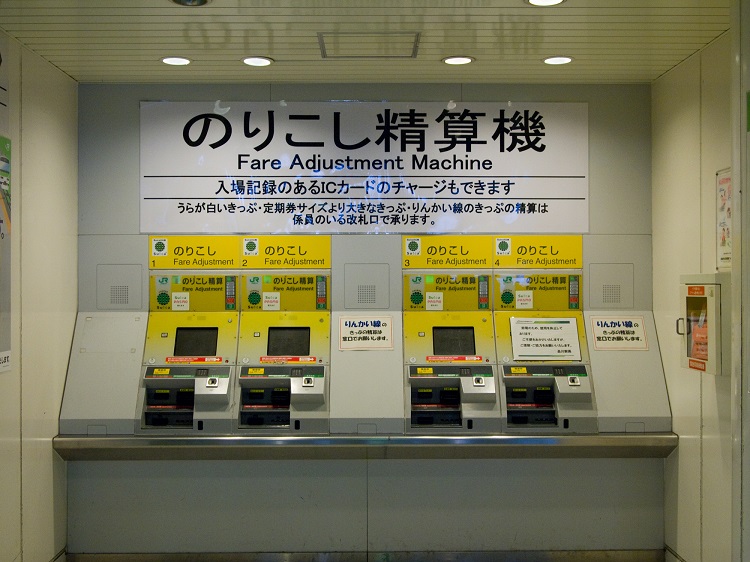
Fare adjustment machine
Buying Express Fare Tickets or Making Seat Reservations
Almost all station set ticket counters called "Midori-no-madoguchi (みどりの窓口)", and you can buy express fare tickets and make seat reservations at the counters. In order to buy the tickets, you need to tell staffs following information;- If you reserve seat
- Name of train that you use
- Departure station
- Destination station
- Date and time of departure
- Class of seats
There are ticket-vending machines which can issue express fare tickets, but important stations set these machines.
Buying Shinkansen tickets
Shinkansen tickets are sold at ticket counters, ticket-vending machines for Shinkansen, and on the Internet. Detailed information is written in this page.How to Pass The Ticket Gates
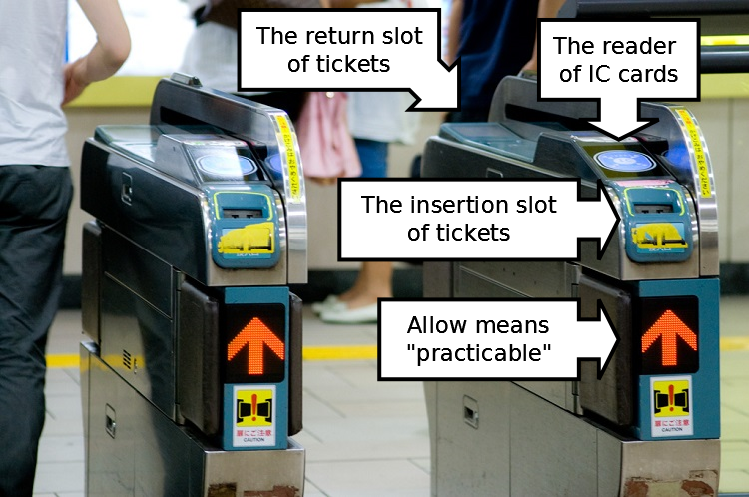
Automatic ticket gates
You can pass through only ticket gates with an allow. Please insert your tickets into the gate or touch the reader by your IC card. If you use the IC card whose balamce is zero, the gate chimes rings. If so, you need to recharge it by ticket-vending machines.
If you use your Japan Rail Pass, please don't insert it into the automatic ticket gates. Show it to the staff near ticket gates, and you can through tha gate.
After passing ticket gates, please visit the your platform. Light sign boards show which platform your train departs from. The language what the boards display is Japanese and English, and it changes alternately.
If you want to go platform for Shinkansen, you need to pass another ticket gate for Shinkansen. Usually, the ticket gates for Shinkansen are located over usual ticket gates. Detailed information is written in this page.
Waiting For Your Train
After arriving at the platform, please stand in line or at the marks on the platform such as circles or triangles. The train's doors open in front of the marks, and the types of the marks means the types of the trains.Also, trains in urban areas includes women-only cars called "Jyosei-senyō-sharyō (女性専用車両)". In many cases, the women-only cars effect in only rush hours, and men cannot get on the cars in the time.
Manners on Trains
On trains, please refrain from speaking loudly, eating or drinking something, and talking on cel phone. (there is no problem with only operating celphone in train.) These actions are treated as bad manners in Japan.Getting off Train
Almost all trains in urban areas have displays, and they show the next station and the information about transfers in Japanese and English. Also, there is the English annoucement of them in some trains.In rush hours such as 6:00~9:00, most trains are crowded unbelievably, so it is hard to get off the train in the situation. In that case, please say "excuse me" or "sumimasen (すみません)" in order to inform people around you that you want to get off.
In order to go out from the station, you need to pass the ticket gates again. If the gate chimes rings when you insert your ticket into the gate or use your IC card, it means that the fare adjustment is needed or the money on IC card is less than the fare. In that case, please adjust the fare or charge money into the IC card by the fare adjustment machines. Also, id you use the Japan Rail Pass, please show it staffs near the gates.
Traian Maps
Local Train Maps
Tokyo Train MapKansai (Osaka, Kyoto, Kobe, Nara) Traion Map
Shinkansen maps
Toukaidou Shinkansen (東海道新幹線)Sanyou Shinkansen (山陽新幹線)
Touhoku Shinkansen (東北新幹線) & Akita Shinkansen (秋田新幹線) & Yamagata Shinkansen (山形新幹線)
Nagano Shinkansen (長野新幹線)
Joetsu Shinkansen (上越新幹線)
Kyusyu Shinkansen (九州新幹線)